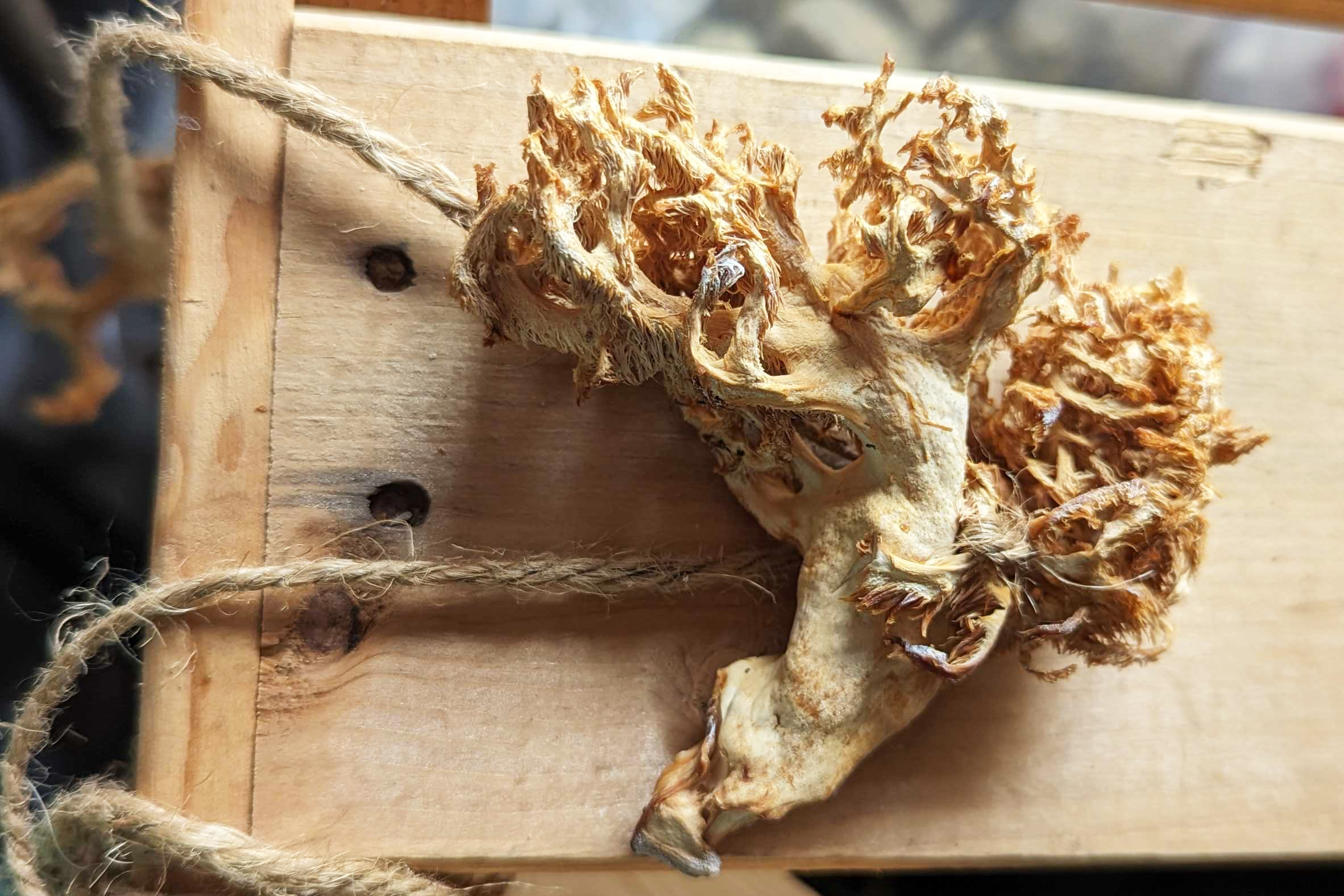Lion's Mane
Lion's mane mushrooms, with their cascading, icicle-like tendrils, evoke the image of a wild, shaggy mane. Beyond their intriguing aesthetics, in regions including Alberta, these mushrooms are gaining popularity for their delicate taste and purported health benefits, particularly regarding cognitive health.

More on Lion's Mane
About
The lion's mane mushroom, scientifically named Hericium erinaceus, stands out from traditional mushroom forms. Rather than a smooth cap and stem, this fungus exhibits long, soft spines hanging from a single clump, reminiscent of a lion's majestic mane. Typically growing on hardwood trees, lion's mane mushrooms are a forager's delight in Alberta's forests, especially in the fall.
History
Historically, lion's mane mushrooms have held a place of esteem in traditional Chinese medicine and various Asian cuisines. The mushroom's potential to support nerve growth and cognitive health has been part of traditional knowledge for centuries. In Alberta, as awareness of this unique mushroom spreads, more individuals are seeking it out, both for its culinary appeal and potential medicinal properties.
Ways To Cook
Lion's mane mushrooms offer a culinary experience that stands apart from many other fungi. When cooked, they exhibit a texture somewhat similar to crab or lobster meat, and their taste is subtle yet rich. In Alberta's culinary scene, lion's mane can be sautéed in butter or oil until golden and crispy, seasoned simply with salt and pepper. They're also delightful when added to risottos, pastas, or soups. Beyond their taste, teas and tinctures made from lion's mane are consumed for potential cognitive and neural benefits. It can also be hang-dried and used in powdered or crushed form. While there's growing interest in its health attributes, it's always advisable to consult with healthcare experts before integrating lion's mane or any supplement into one's diet for medicinal purposes.

Videos
Alberta Lion's Mane Mushroom Producers
Mushroom Labs Inc.
About this producerFoods from this producer:
Basil Ranch
About this producerFoods from this producer:
Woodland Mushrooms
About this producerFoods from this producer:
